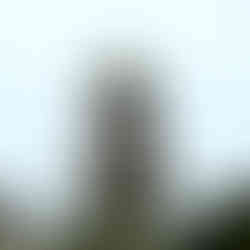Intersections of Faith + Culture In & Around Our Church Buildings
- Hawai‘i Conference
- Jun 2, 2021
- 4 min read
Where do faith and culture intersect in your church? Churches were invited to share photos of where they see evidence of the intersection of faith and culture in and around our church buildings.
Keawala‘i Congregational Church, Maui
First United Protestant Church, Hawai‘i

When the first missionaries arrived in Hilo around 1831, the only accommodation available was a grass hut. Through the goodwill of the local Hawaiian community, a more secure dwelling was built of stone. Since the 1830's the stones from this first dwelling have been used in the foundation for each of the new church buildings and are present today in the foundation of the church's bell tower and stonework seen around the building.
First Chinese Church of Christ, O‘ahu

Kōloa Union Church, Kaua‘i
Palm Sunday altar

Mānoa Valley Church, O‘ahu
Construction of the Mānoa Valley Church Sanctuary Was the Result of a Massive, Mutual Effort
“One of the many tasks accomplished by dedicated and hardworking MVC members was to find the material and supply the labor for the four cornerstones of the sanctuary. They are built of lava rock that was dug out from the mountainside property of Hirotoshi Yamamoto in Waiʻanae by our members and hauled to Mānoa in their own trucks over several weekends. Picture this: men work their way up the hillside like billy goats, then dig with crowbars and pry out pieces of lava rock and roll them down the hillside, to be loaded onto trucks.
Every member of the church contributed to the building program over the two-year span. There were also the contributions of countless friends, including the artisans from the Mormon Church in Salt Lake who spent one weekend putting the swirls on the concrete finish fronting the Huapala Street side of the church. Their artwork complements and enhances the beauty of the stained-glass window."
(Adapted from Mānoa Valley Church 50th Anniversary Signing of the Charter)


The design in the wall of Mānoa Valley Church was the work of Mormon artisans.
Church of the Holy Cross, Hawai‘i

Worshipers at Church of the Holy Cross are greeted by this bell that reads:
Hilo Japanese Christian Church
November 1915
Hilo, Hawaii
Marshallese Church, Kaua‘i
The church is painted in the colors of the flag of the Marshall Islands—blue, orange, and white.
Waiola Church, Maui
United Community Church, Hawai‘i

United Community Church’s Congregationalist Beginnings
United Community Church, part of the United Church of Christ denomination, has been in Hilo, Hawai'i since 1882. Initially formed by Congregationalist missionaries to serve the needs of Chinese plantation workers, largely from Guangdong or Canton, the church began as the Hilo Chinese Christian Church on Ponahawai Street, at the site of the present-day Salvation Army in downtown Hilo. In the 1937, the church moved to its present location on Kino'ole Street. After 1939, the church held only English language worship services and in 1956, changed its name to United Community Church, to reflect the ethnic diversity within its membership that is so much a part of local culture.

The sanctuary and parsonage of United Community Church are listed on the Hawai'i Register of Historic Places. Built in 1936 for the first pastor of the church and his family (wife plus 14 children), the two-story parsonage has five bedrooms and two bathrooms. Its exterior walls are white clapboard and it has a traditional red Chinese roof with upturned corners. In China, red symbolizes good luck and the upturned roof corners are also lucky, designed so that evil spirits will slide down and immediately be flipped off of the roof, enabling the house occupants to be blessed and remain free of curses. This is similar to the concept of gargoyles, which often decorate churches in Europe as a melding of pre-existing culture and "new" Christian theology. For new Chinese immigrants, the parsonage and United Community Church were visibly identifiable as Chinese, designed to help immigrants feel immediately at home, regardless of Christian theology.


Like the parsonage, the sanctuary was built with identical architecture in 1937 with Chinese upturned pagoda eaves at the corners. Although it also has a large white cross atop it, so that it is clear that it is a Christian church and not a Daoist or Buddhist temple. The church has a bell tower and working bell, which is rung each Sunday immediately before worship begins. The interior of the church is very simple, like a traditional Congregationalist church: plain painted walls and wooden pews. In 1987, a beautiful stained glass window was added to the front of sanctuary, showing Jesus with Chinese facial features, washing the feet of one of his disciples.
The sanctuary, which can hold about 250 people, has excellent acoustics and is regularly used for concerts, recitals, and performances, in addition to worship and other activities. The parsonage is now being used for the church's transitional housing ministry. All of the church buildings, historic or not, exist as tools for ministry and service to the community.
Nu‘uanu Congregational Church, O‘ahu
Each corner of the sanctuary features stained glass by Sadao Watanabe.
If you would like to share where you see faith and culture intersect in/around your church building, email media@hcucc.org.

















































